Don't wanna be here? Send us removal request.
Text
Facebook’s Frustrating 20% Text Rule
17.02.16 - This post was written during my time working at Inbound Digital Marketing

As you may have seen in my last blog post, Facebook has a very frustrating 20% text rule for images (and videos!) when it comes to promoted posts. I thought that a topic I felt so strongly about deserved its own dedicated blog post – so here it is!
What is the 20% Text Rule?
If you want to promote an image on Facebook it needs to have less than 20% text in order to get accepted (most of the time!), by Facebook. It's not nearly as simple as it sounds and there are many restrictions and allowances in place.
For example, you may be able to get away with more if you use a 'product shot'. Product shots are when your product is in a real photo, in a real situation. Text or logos which are a part of this photo don't count towards the 20% text rule. However, if the photo is zoomed in in order to focus on the logo or brand, then this is not the case. You can see how it's starting to get quite complicated!
In the same way, if you have product shots created in a studio or added to another background, then you can also get away with any logos/text not counting towards the 20% rule.

Image source
When it comes to adding text and logos separately, Facebook uses a 5x5 grid-based detection tool and if you use more than the 5 boxes then it is likely that your image will be rejected. If you have a small part of the text going over into another box then these boxes probably won't be counted – but if Facebook can tell that you are obviously exploiting this then your image may still be declined!
Of course you can experiment and sometimes get away with it (as you will see in some examples below). This, however, is not best practice and when you are acting on behalf of a client it is better to be safe than sorry.
A blog post by Jeff Rajeck explains how he thought the 20% rule may have been dropped and what he was able to get away with. Here are some examples (both of the post images below were approved even though they're clearly over 20% text!):

Image source
When and why was the rule introduced?
The rule came about as a way of Facebook trying to get people's newsfeeds to be more relevant rather than just being filled with aggressive advertising and marketing messages. The rule was announced in December 2012 and was put into place in January 2013. It has therefore been in place for 3 years and still going strong! You would have thought that with 3 years worth of people's irritation and complaints, Facebook would have at least adapted the way that their grid tool works. Surely there's got to be a way that they can actually check the percentage of text being used and the message portrayed rather than how many boxes your text may happen to go into? I feel that, for example, motivational quotes aren't exactly 'salesy' and of course would take up a lot more than 5 boxes – why can't these be promoted without having to follow the 20% text rule?
Why does it frustrate so many people?
In case reading the above hasn't given enough examples as to why this rule is ridiculously aggravating, take a look below at what other people have to say about it:


Image source
What are the best ways around it? The best way to get around the rule is simply to not have much text required on the image. You can then have a large couple of words taking up 4 boxes and perhaps a small logo taking up the 5th box.
Another way is to use really good product shots. This way you can convey your message as much as you can through bespoke photography and even get your brand/logo in there without using any of the treasured 5 boxes!
Here are some example layouts which I found online to show you how to get the best use out of the 5 boxes:

Image source
Does Facebook plan on frustrating us with this rule for the rest of eternity?
I don't see this rule being lifted any time soon as, ultimately, it is really in place for the benefit of Facebook's users. I do, however, really think that Facebook should recreate their grid-based tool to allow for more flexibility.
As I mentioned above, I don't believe that motivational and inspirational quotes are invasive to people scrolling through their newsfeeds and as long as the logo only takes up a small amount of space then I feel that these should be an exception to the rule.
When it comes to advertisement-based posts then I definitely agree that there should be rules in place. However, it would be great if Facebook were able to find another way to detect the percentage of text used without having to use a grid (as this is so restrictive from a designer's point of view)!
0 notes
Text
How to: Visually Portray Your Brand Over Social Media
09.10.15 - This post was written during my time working at Inbound Digital Marketing

Is your brand active on social media? Yes? Well so is every other brand! You need to make sure that your brand is standing out when people scroll through their endless newsfeeds. How can you do this? One of the main ways that you can stand out is visually. Whether this be with photos, quotes or videos.
Creating visually engaging and branded images can be quite tricky. You want people to remember your brand but you don't want to come across as too 'salesy'. Your images should be subtly branded so that your audience knows instantly that it's you without you having to slap a massive logo over the top. There's a few ways that you can brand your image and a few things to be aware of before you start. I am going to outline these below whilst giving visual examples.
Facebook's Frustrating 20% text rule
One thing to be aware of is that Facebook has a very frustrating 20% text rule for images when it comes to promoted posts. Of course this makes sense in terms of avoiding bombarding Facebook with loads of sales based text, but from a designer's perspective, having to stick to a specific grid can be very restricting. I feel that this topic deserves a whole dedicated blog post in itself, so please check that out next time!
Remember to also research what dimensions your visual needs to be depending on the social channel and purpose of the post.
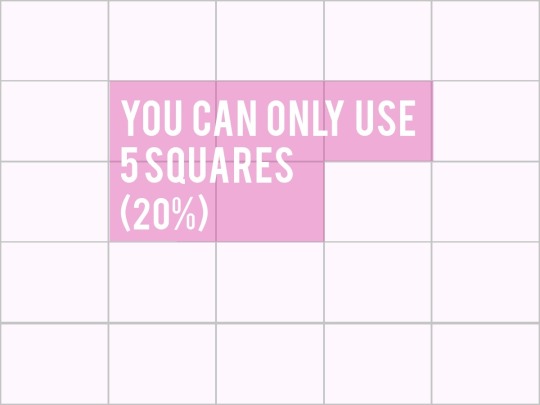
Logo Placement
It's a good idea to decide where you want to place your logo (a very small logo!) and to keep this consistent throughout all of your future images. Most of the time the logo is placed in the bottom right-hand side corner (such as in the Virgin Active example below). I feel that a logo is more likely to be seen if it's placed here as the eye tends to travel this way down a page. If your images are well branded in other ways then you may not even need a logo at all. PayasUgym has always stood out to me in my newsfeed and they don't use logos at all on their promoted post images. Surprisingly, I don't even follow this brand or had heard of them before, so they are definitely branding their visuals in the right way!

Templates
Templates can be great but they can also be awful. They save time and also help to ensure consistency. On the other hand, your images can become boring very easily and your audience may just scroll past them without thinking twice. A good middle ground would be to have a few different templates which you can use so that you can mix things up but still build up a recognisable style.
Fonts
As with templates, using the same font for everything shows off your brand but can also get quite repetitive. The old Pure Gym brand (before their recent rebrand), was a good example where they would use a mix of fonts in each image.

However, since their rebrand they seem to be being very consistent with their fonts and style:

Colours and Filters
Something which you may see a lot of is a brand using the same colours or overlay styles on all of their images. Cadbury uses their signature purple in every single image. This is some serious consistency! Notice though, that their images are all very different and engaging:

Corona is a great example of where the same overlay/filter style is applied to help portray their brand visually. Picking out the golden colour from their logo; they carry this across into their social images:

Image Style
Once you have decided on your visual style. Try and stick to this. Will your images feature high quality photography (try to avoid the stock-imagery style!). Or perhaps your images will include illustrations, or maybe a mix of both. Sometimes you can get away with swapping between different styles (such as how Cadbury does), but you need to make sure that you are swapping consistently so that your audience knows what to expect and isn't confused when they see a completely different style of image posted. Remember: consistency helps to build up authenticity.
Getting Creative
The overused phrase 'think outside of the box' is completely relevant when visually portraying your brand. All of the above should be used as a guideline but don't be afraid to try something different. One of the best things I have seen (again, posted by PayasUgym), was this carousel of images on Facebook - where they have quite literally thought outside of the box!

I was really impressed by the linking of images. It is so simple yet effective. This is a great example of when doing something differently can really work well.
Conclusion: Consistency is Key
If you remember one thing from this post, let it be consistency. Your audience will become more reassured of your brand when you're recognisable and familiar. As it says in the book, 'Designing Brand Identity', “Consumers have become active participants in the brand-building process. Everyone has become a player, producer, director and distributor.” Once you have created a strong brand with great visual content, your audience will want to share these pieces of content with their connections and this is when your brand will really prosper.
0 notes
Text
Brand: History Lesson 3 – Looking Ahead
03.07.15 - This post was written during my time working at Inbound Digital Marketing

Following on from my previous post (Brand: History Lesson 2), brands now need to be thinking first about creating a brand presence online. Although this is the final post in my brand history series, this post is going to explore the 'not-so-distant past' events ie: more of the current and future aspects of brand.
BUILDING A BRAND ONLINE
These days your audience's first experience and impression of your brand will usually happen online. This means that your brand needs to be portraying itself in the best light through all digital channels.

Building a strong brand online essentially requires the same steps as building a strong brand in general (see my post 7 Steps To Building a Brand), however, you also need to take advantage of as many different digital avenues as you can. Apart from having a great, responsive website, you should also have an up-to-date blog, business pages and a range of relevant social media accounts. Everything needs to be consistent, both visually and through the tone of voice.
There must be a clear strategy in place in how you want to be perceived by others. Whatever you do needs to drive engagement and make your audience want to connect positively with your brand online (whether this be by following you, writing a good review or sharing your content).

Starting off with a strong strategy should result in growing a community of people who are aware of and love your brand and essentially can naturally do a lot of the marketing for you. To get to this stage you need to know who your customers are and somehow find a way to get them to return.
DIGITAL MARKETING
Digital marketing can provide a great framework and support in building your brand online. This type of marketing includes content creation (written or visual), updating social media accounts, creating an attractive, user-friendly website, and having a focus on quality SEO amongst many other things. Your brand is at the heart of all of this and the stronger your brand, the more likely your digital marketing strategy is to succeed.

When it comes to content creation, the key is to create something which is highly shareable. There are two avenues to take here: extremely humorous or extremely useful (or both!) A great way to encourage engagement is by involving influencers in your work. Whether this be by interviewing them directly or including and expanding on a quote from them. You can then share your piece of content with them and hopefully they'll want to share this with their own large audience too. If your brand is strong enough, you may even be featured in other people's content – another way to get engagement and possibly links back to you.
SEO
When it comes to SEO and Google, no one is ever entirely sure what the next Google update/algorithm may bring, but there are always some pretty good predictions. Past updates have seen websites penalised for having spammy links and overusing keywords. It is becoming more and more obvious just how much Google loves brands (and good content)! The best way to get to the top is organically and this can be achieved by others linking back to you. People are more likely to do this when they know and love your brand and share your content without any hesitation. As Rand Fishkin, of Moz.com, said, “The long-awaited dominance and bias of search results toward brands is here.”
PREDICTION

Naturally, strong brands get a lot more engagement and have built up a feeling of trust with their audience. These brands know what they're all about and create content accordingly. Everything is consistent and Google will likely start to place more emphasis on this. My advice would be to make sure that you have a strong brand and ensure that you are doing all that you can to communicate this to the world of digital.
0 notes
Text
Brand: History Lesson 2
29.05.15 - This post was written during my time working at Inbound Digital Marketing

Now that we know where the term 'brand' comes from (see Lesson 1), it's time to look at the more recent history of brand in this post, 'Brand: History Lesson 2'.
Standing out
With the 1960's bringing the rise of new media, including TV and video, came the increased need to stand out. Competition was no longer just between companies but also between countries and cities fighting for the attention of tourists. In 1969, Canada became the first nation to have their own symbol and logo. This then started a trend in cities branding themselves.

This importance of having a logo extended to all organisations, whatever size, which led to graphic design and branding becoming a part of everyday business. Everything from annual reports to the company's overall 'image' had to be recognisable.

However, just having a strong visual identity wasn't enough. Businesses had to focus a lot on the service they were offering to make it the best it could be.
McDonald's shows how it's done
McDonald's is a great example of a company who really pushed themselves beyond visuals to succeed in becoming a strong brand, especially in the late 1970s.
A strong work ethic was something which all McDonald's employees had to possess. All new members were trained up by watching videos about McDonald's policies and practices. The new employees would then be given a trainer to help them learn the proper procedures, as consistency was key.
Quality customer service was a very important aspect in McDonald's establishing themselves. It was essential to keep customers happy. There was also an emphasis on cleanliness. If the employees had any spare time they would be expected to clean.
I think one of the ways where McDonald's were able to do so well was with 'suggestive selling', which can still be seen today. This is where you would be asked if you wanted a drink or dessert with your order or if you wanted to “supersize that” - they were always trying to get more from their customers.
To encourage staff to work to the best of their ability, McDonald's hosted an All Stars competition. Employees could compete to win in their category nationally. They would win a trophy, shares in McDonald's and a cash prize, amongst other things.

The fact that they also had strong visuals from such an early stage including a memorable mascot, Ronald McDonald, and a very identifiable 'M' as their logo (which was referred to by many as 'The Golden Arches'), helped towards them building such a strong brand which is still one of the biggest brands around today.
To be a strong brand you had to focus on the overall message your brand was portraying just like McDonald's did.
Surviving as a strong brand

With communication becoming two-way between consumers and companies, businesses were forced to listen to their customers and develop themselves based on feedback from their audience. Being an ethical brand was also brought to light and brands such as Nike were scrutinised for their working conditions. It takes a strong brand to be able to bounce back from bad press like this and Nike has managed to remain a very powerful brand.
But it doesn't end there. With the rise of new media and technology, businesses had to keep up and create a presence online. With nearly 1 billion websites online right now, it seems almost impossible to show up on the first page of a Google search. Companies have started to invest in digital marketing to give their brand a chance of surviving and to ensure that their audience stays loyal to their brand. I will be exploring this further in my next post, 'Brand: History Lesson 3'.
0 notes
Text
The Art of City Branding
15.05.15 - This post was written during my time working at Inbound Digital Marketing

A city needs a strong brand to attract tourism, future residents and protect its global reputation. In some cases, a logo for a city can become an internationally recognised symbol (such as "I Love NY"), and in the social media age, there is pressure for cities to attract visitors using online marketing and brand building.
Older cities in Europe can lean on famous landmarks and interesting histories for their brand, whereas younger cities such as Los Angeles must focus on the new - glamour, sports teams and future icons.
This infographic, which I created for Mojo Promotions, compares major cities around the world and their branding elements, logos, taglines and social following. From Berlin's focus on culture and the arts to Cape Town's push on the vibrancy of its culture - each city has a different brand and approach to selling itself.
Branding a city is a huge task, and each campaign is as unique as the city it represents - here is a whistlestop tour of branding around the world!











0 notes
Text
Brand: History Lesson 1
31.03.15 - This post was written during my time working at Inbound Digital Marketing

After writing a couple of posts about brand, I thought it would be interesting to explore where the concept of 'brand' originated. I am going to split this into a few, easy to digest posts, with this first post being 'Brand: History Lesson 1'.
2000BC

So, where does the term 'brand' actually come from? The word 'brand' is derived from 'brandr', an Old Norse term meaning 'to burn'. Belongings such as cattle, timber, crockery and even slaves were 'branded' with a symbol using a hot iron rod to demonstrate ownership. This antagonistic use of branding, which dates back to 2000BC, started to change around the 1800s into a more commercial activity where items were instead branded to differentiate and promote goods and services.
AD 190-1700s
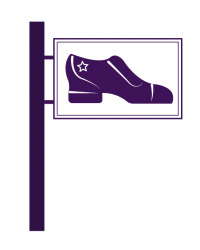
With the fall of the Roman Empire, craftsmanship deteriorated and people were mostly illiterate. This resulted in town criers being used to spread information and later on, when things improved, paid to advertise goods. Hand-lettered adverts and signs were hung to show different types of businesses (such as a shoe for a shoemaker). The first ad in a newspaper was seen in 1625, in England. By the 1700s, the Government introduced patents, trademarks and copyright laws in order to encourage development and innovation. Trademarks acted not only as a way to identify products, but also to show their origin and therefore, quality.
1700s-1800s
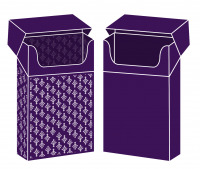
The Industrial Revolution (mid 1700s in England), saw the start of mass production. This meant that goods could be produced in a much more cost-effective way. Advertising agencies started in the late 1800s as a means to coming up with original ways of promoting goods and reaching audiences, stimulating demand. This all introduced and highlighted the importance of visual identity and trademarks. Tobacco companies were amongst the first to use unique labels and packaging to attract attention.
It's interesting that the Government is now looking at removing branding from cigarette packaging altogether. This is something which has already been put into effect in Australia in attempts to make cigarettes appear less appealing.
1900s
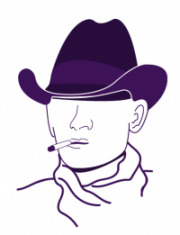
By the 1940s, there was a lot more competition between companies to get their products noticed and this is when the concept of the USP came in. The 1950s saw the rise of characters being used as the face of a brand. An example of this is the 'Malboro Man'. The Philip Morris Cigarette Company was really struggling to sell their brand of cigarettes aimed at women when they came across an article in a magazine written about an ordinary cowboy, Clarence Hailey Long. They decided to use the cowboy as the face of their brand and to instead, aim the product at men. Their sales increased by 300%. Unfortunately, after the excitement of going from a shy cowboy to a celebrity, Clarence died of cancer.
Brand names started to become more of an importance in the 1960s, where the usual idea of using the founder's name or product's origin was replaced with having more fun and playful names, sometimes deceiving the public. In America, it was thought that the Danes produced the best dairy products. This gave two Polish men from New York the idea to invent the word 'Häagen-Dazs', aiming to mislead people into thinking that their dairy products were actually from Denmark!

In the 1960s the concept of a product being less of a product and more of a status symbol were seen by the likes of Harley Davidson and Mercedes. Things all got a bit out of hand when the idea of false advertising became apparent to society. Brands started to lose their audience's trust and some were forced to rebrand. For example, McDonalds had to look at a redesign using tones of green and yellow in order to portray them as part of a healthy lifestyle and not as an unhealthy fast food restaurant.
As you know, McDonalds is now a very established brand. I will be exploring this and other brands in my next post, which will explore the more recent history of brand.
0 notes
Text
7 Steps to Building a Strong Brand from the Outset
16.01.15 - This post was written during my time working at Inbound Digital Marketing

As I said in my previous blog post, 'A brand cannot be directly created by the company or a designer. The brand is consumer driven and represents the relationship between the consumer and company.' However, there are steps you can take to make this relationship as strong as possible and for your consumers to be more likely to view your brand the way you want them to.
After doing some research into brand, I have come up with what I think are the 7 main steps to building a strong brand. Before I go through these steps, it's important to realise that these are just as valuable for small businesses as they are for the large corporate giants and just as useful for businesses offering a service as they are for those selling consumer products.
Having a strong brand ultimately results in more sales and longer-lasting relationships with customers – you would expect this to be one of the main goals for most businesses, wouldn't you?
Nearly all of the steps below can be carried out for free – so there should be no excuse for not creating a foundation in which you can develop a strong brand. Here is a mini graphic I've created which summarises the steps below(click to see larger version):

1.) Define your brand

Firstly, you need to figure out what exactly it is that you do and to know what separates you from the competition (your 'USP' as many like to call it). Of course, many businesses provide the same thing and it can be quite challenging to find what it is that you do differently. What can you provide your clients that company X down the road can't? Why should a potential client choose you over company X?
If answering these questions still doesn't provide much insight, then you can look further into your company for some clues. What history or culture does your company possess and how can you work with this? Is there a certain individual in your company who you view to be a particularly valuable asset? Can you “sell” this person as part of your services and what you can offer? The ultimate goal is to find something that the world needs and to be the go-to place to fulfil this need.
Don't let this first step put you off. It may take a while to come up with something original, but just take a look at the big brands for inspiration. What do Apple and Samsung both do when it really boils down to it? They sell consumer electronics. Doesn't sound too exciting does it? The difference though is that Apple relies on innovation and unique designs and patents. Samsung's mission statement seems to be: 'Inspire the World, Create the Future'. Perhaps the difference here then is that Apple's focus is on their actual products and making them the best that they can be, whereas Samsung is more customer-focused, aiming to inspire the world.
Note: You should constantly be re-evaluating your 'USP' to ensure that you are still providing what it is that your customers want and need.
2.) Think of your brand as a person

Once you have figured out what your brand is all about, the best way to build on this is to think of your brand as a person. Brands have personality, strong brands create relationships and even stronger brands use these relationships to create customer loyalty.
Think about what your brand's beliefs, values and purposes are. How would your brand dress, or introduce itself? What characteristics would make your brand stand out and be remembered? Once you have created a personality for your brand, the rest of these steps should be a lot easier to follow.
3.) Name your brand
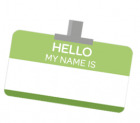
Now it's time to name your brand. There are a few things to consider...
Firstly, keep it simple. Great names are usually short, memorable and easy to spell and pronounce.
There are 3 routes you can go down when creating your name:
- Descriptive (eg: The Home Depot, BBC [British Broadcasting Corporation], Jack's Hill Motors) This is usually the most obvious path to take and can sometimes work quite well, especially when abbreviated. However, this doesn't provide you with much of a platform on which to build an engaging brand with personality.
- Suggestive (eg: Netflix, Pinterest, Staples) Being the middle option between being completely obvious or completely random, many companies choose to go down this route when naming their business. They not only allow your consumers to connect the dots themselves but they usually allow for more creativity than the descriptive names.
- Playful/arbitrary (eg: evian, Starbucks, Samsung) Although 'evian' was supposedly named after a town in France, not many people would know this when hearing its name. It also happens to be naïve spelt backwards. Having a playful name is a great way to convey an inviting brand, which welcomes curiosity and instantly represents innovation.
Once you have a few ideas, ensure that the domain for your name is available. It's important to have a website that is easy to find and this is more likely if your website name is your company name. If the name has already been taken, try to figure out how established they are. A lot of the time, you can request to buy the domain from them or reserve it for when it expires.
4.) Have a visual identity

The next step is to visually communicate your brand. This includes your logo as well as other aspects such as website and stationery design, office space, uniforms, signage, products, etc. Coming up with a good logo is one of the most important parts to building a strong brand. Apart from your name, this is the largest representation of your brand and is what people will see when they think of you. Although this symbol doesn't necessarily need to communicate what it is that you do, it should be easy to remember and work well at a range of sizes and on different media.
The rest of your visual identity can then follow on from this. Consider colours, shapes and images.
Once you have completed this important step, all visuals need to be kept consistent. Looking at the image below, which company would you choose to buy product A from? This should be enough to highlight the importance of the visual elements of your brand.

5.) Company Culture
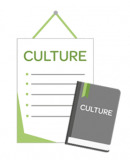
It is essential that your employees understand and believe in your brand. A successful way to ensure that everyone is on the right track is to create a company culture and to stick to it.
Come up with a few, meaningful company values and make sure that everyone agrees on them. Constantly referring to these will make sure that your brand is creating the right reputation for itself and, hopefully, communicating your brand to others in the best possible light.
Company values/culture can include things such as the way you interact with people outside of your company, embracing change, being a supportive team with outstanding communication, among many others. For more examples and ideas, feel free to take a look at 8 steps to getting company culture right.
6.) Share your story and build trust

The value of this is becoming more and more evident. Brands used to be a lot more corporate and lifeless than they are today. With social media, brands now have more of a voice and can reach out to a much wider audience. The more honest, truthful and interested you are, the more your customers will learn to trust you and engage with your brand. A great example of this was shown by the very well known brand, Virgin, when VirginTrains responded very quickly to a desperate tweet from an onboard customer:
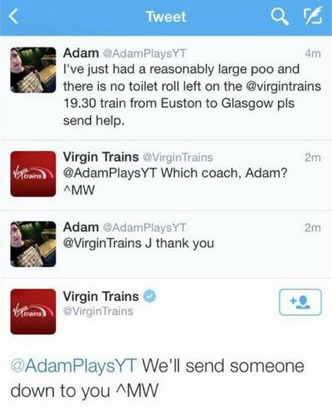
Adam, of course, was delighted with the service provided and went on to tweet, 'Can we please take a moment to thank the best train service provider @VirginTrains'.
A Virgin spokesperson added, 'At Virgin Trains we work really hard to respond to our customers quickly, to make sure they get the information or help they need – whatever the request!
We recognise that we're all human and if we can brighten a customer's journey and be a little cheeky along the way, all the better.'
7.) Reach your audience

Following on from the previous step, you should try and be involved on as many relevant platforms as possible. Whether this be Twitter, Facebook, Instagram or perhaps something more niche and applicable to your sector. You also need to stay active on these accounts and possibly post an update every day. Your audience will find it a lot easier to build a connection with you if they're able to interact with you frequently.
Of course, these 7 steps are just the start of building a strong brand. Building a strong brand takes time and these steps need to be re-evaluated regularly, always with the aim of providing what your audience wants.
Virgin Trains Image: http://www.theladbible.com/articles/lad-gets-lucky-as-he-runs-out-of-toilet-roll-on-a-train
0 notes
Text
Do you know the difference between Brand, Identity and Logo?
16.01.15 - This post was written during my time working at Inbound Digital Marketing

For some people, the words 'brand, 'identity' and 'logo' seem to be interchangeable. Although they all relate to how your company is viewed, these terms represent different parts of this. Using my compilation of research and 'Apple' as an example, I wanted to see if I could find a way to clearly outline the differences.
Brand: What people say about you when you're not in the room
A brand cannot be directly created by the company or a designer. The brand is consumer driven and represents the relationship between the consumer and company. This relationship is built up over time using promises, experiences and memories. Another way to describe a brand is a company's 'personality', which is created by the perceptions of the audience. A quote from Jeff Bezos, founder of Amazon, which I think explains the term 'brand' really well is, “Your brand is what people say about you when you’re not in the room”.
Summary:
Consumer driven
Relationship
Promises
Experiences
Memories
Personality
Apple's 'Brand': How consumers may describe their view on Apple is with words such as: 'Trust', 'Lifestyle', 'Simplicity', 'Beautiful Design' and 'Loyalty'.

Identity: Sensory and visual consistency
The identity of a company is its sensory devices, which the audience comes into contact with. This includes consistency with business stationery, marketing materials, emails, signage, office/shop space, uniforms, etc. Summary:
Sensory
Visual
Consistency
Apple's 'Identity': Apple's identity could be seen as their visual consistency with things such as the recognisable blue t-shirts worn by staff, store designs (glass, light wood, bright), and product shape and colours (curves, silver, white, black). Examples of these can be seen here:

Logo: Brand and identity simplified to an identifiable mark
The logo is the identity and brand all symbolized with an identifiable mark. A logo doesn't necessarily have to describe what a company does and tends to work best after becoming more familiar over time. For example, once a name has been used to identify someone over time, this becomes memorable even though their name doesn't exactly describe their personality.
Summary:
Icon
Symbol
Wordmark
Identifies company in its simplest form
Apple's 'Logo': Although an apple doesn't directly describe what the company does, it has over time become a recognisable icon for the company. The apple logo does, however, have some hidden aspects such as the 'bite' in the apple relating to the computer term 'byte'. The main thing is that even though there have been slight changes, the logo has remained the same shape for nearly 40 years and it is this consistency that has created a recognisable symbol:

So to conclude:

Images used:
http://commons.wikimedia.org/wiki/File:HK_%E4%B8%AD%E7%92%B0_Central_IFC_mall_%E8%98%8B%E6%9E%9C%E5%BA%97_Apple_Shop_interior_duplex_visitors_n_uniform_at_work_Oct-2011.jpg
http://commons.wikimedia.org/wiki/File:Apple_Store_North_Michigan_Ave_Chicago_IL-2005-10-22_ROTATED.jpg
http://commons.wikimedia.org/wiki/File:HK_%E4%B8%AD%E7%92%B0_Central_IFC_mall_%E8%98%8B%E6%9E%9C%E5%BA%97_Apple_Shop_interior_stairs_Oct-2011_006.jpg
http://commons.wikimedia.org/wiki/File:IPad,_iPhones_and_Magic_mouse.jpg
0 notes
Text
Logo Design Trends – Should You Lead or Follow?
28.11.14 - This post was written during my time working at Inbound Digital Marketing
During one of my intense Pinterest inspiration sessions, I came across this slightly humorous infographic providing steps on how to create a ‘hipster’ logo. Now if you aren’t ‘hip’ enough to know the definition of ‘hipster’, it is: ‘a person who follows the latest trends and fashions’.
Click on image to view full infographic:

Example of Hipster style logo:

We are often told that to succeed we must imitate the competition. But perhaps in some cases it may be better to lead rather than follow? If we are always copying then we are always going to be one step behind. There are many more arguments for why following trends in logo design is not an option. Design trends can change very quickly, but logos should be timeless and have long-lasting appeal. After all, isn’t this how a brand is built – over time?
An example of this is ‘Nike’. The ‘swoosh’ design was created over 40 years ago but is known as one of the most iconic logos of all time.
Nike logo:

Also, as the infographic states, when using this hipster guide, there is “no concept necessary”! Following trends may make life incredibly easy in the short-term but for a brand who has based their visual identity on a trend, their brand may become lost amongst others very quickly. A company should be creating a ‘brand experience’ and to represent this visually, it could take months of research to create the perfect logo.
‘Airbnb’ is a great example of a company who took nearly a year of in-depth research (travelling to many different countries, interviewing real-life airbnb members) before coming up with their final rebranded logo. Although there is a lot of controversy around the new design, it is safe to say either way that it is definitely a memorable design!
Airbnb logo:

In order to see how quickly it would be to rebrand companies when following a trend, I decided to try out the Hipster logo guide for myself, rebranding large corporations such as ‘Apple’, ‘McDonalds’, ‘Coca-Cola’ and ‘Nike’. I even gave Inbound a bit of an Hipster uplift (or perhaps ‘uplift’ isn’t the right word…!)
As you can see from the rebrands I created below (which, to prove my point above, were very quick and easy to create), the personality of each company has immediately disappeared. I do agree that they look fresh and modern and perhaps this style would suit certain brands, but for companies with long-term aspirations I don’t think this is the right way to go.

Another thing I noticed is that many ‘hipster’ logos tend to be black or white. Although from my experiment above, logos which can easily convert to white work quite well, for some brands, this isn’t the case. For instance, I don’t think ‘McDonalds’ looks as appealing in white compared to its usual renowned red/yellow combination. Fast food brands tend to use red in their logos as it evokes a feeling of immediacy which tends to stimulate feelings of hunger. Take a look at the white ‘M’ logo which I tried out below – not craving that Big Mac so much now are you!?

As can also be seen here, the ‘hipster’ style doesn’t suit everyone. No matter how ‘hip’ we all are here at the office, I’m sure you can agree that the Inbound logo doesn’t look so great when following the trend…
Hipster version of Inbound logo:

Original version of Inbound logo:

You can see other hipster versions of corporate logos here.
And, if you so wish, I came across this site (after designing mine from scratch!) where you can build your very own ‘hipster’ logo.
0 notes
Text
Design Report - 'How do we encourage more people to become organ donors?'
Cut out front cover:

I have just completed my final year design report, answering the question, 'How do we encourage more people to become organ donors?'. The report was to relate to our Major Project brief (I created an awareness campaign for organ donation).
- 3 people die every day in the UK waiting for an organ.
It is assumed that the main reasons for people not signing up are:
Due to not knowing enough about organ donation
Feeling that their religion may not support it
Just haven’t got round to signing up
These assumed theories were supported through the research carried out.
Eg: Of the 64% of those who would consider becoming an organ donor, only 14% have already signed up.
Below are some images of the final design report:
Pop-up 3D data:


A few of the inside pages:



For more information on organ donation, or to sign up to the organ donor register, please visit: http://www.organdonation.nhs.uk/
0 notes
Text
Info...
Please see below some further Uni blog posts - now from my current second year... :)
0 notes
Text
Review of August Sander Exhibition
I recently saw an exhibition of August Sander’s photography at New Walk Museum and Art Gallery.
August Sander is a very influential and important German photographer of the 20th century. He originally worked as a miner before joining a photographic studio where he learnt the trade and then set up his own photographic studio.
As well as being aesthetically pleasing, Sander intended to create encyclopaedic portraits to show human experience during his time. Therefore showing that documentary photography is just as, if not more, important than ordinary photography.
In 1931, August Sander said, “The essence of all photography is of a documentary nature, but it can be uprooted by manual treatment. In documentary photography, the meaning of what is being represented is more important than the fulfilling of aesthetic rules of external form and composition”.
According to the Gallery Guide, “this analytical approach, combined with his incisive photographic vision is what makes his work so important and ensures it remains influential today.”
The photographs at the exhibition are described as ‘archetypes’ where they are there to represent groups of people rather than to just be a singular portrait.
For example, ‘Farmhands Bauernknechte’ (Fig. 1) shows three farm workers under the portfolio title of, ‘The Worker – His Life and Work’. Sander’s classification of German society can be seen throughout his photographs and, “there is a clear hierarchy in the class roles. The farmer who works the land is the foundation of society that makes all other types possible” (Gallery Guide, 2012). His work shows the importance of all classes within society.

Fig. 1 August Sander, ‘Farmhands Bauernknechte’ (1929) [Online Image] Available from: http://www.tate.org.uk/art/images/work/AL/AL00037_10.jpg [Accessed 9/12/12].
I find this particular photograph quite interesting. All three men look very proud and hardworking. I like how Sander is able to capture this mood and their identities and to show this through a single image. I also like the sepia, rather than the expected black and white, colour of his photos as this adds interest and character.
The layout of the exhibition itself was very simple and neat. Each photo was framed in a thin, pale wooden frame, which keeps the exhibition looking clean and minimalist which therefore doesn’t detract away from the images themselves (Fig. 2).

Fig. 2 August Sander, ‘Studien - Der Mensch’ (Studies – The Human Being, Grandmother and Child, 1919): Example of the presentation of the photographs (2012) [my own image]
The typeface used throughout the exhibition (photograph names [Fig. 3] and August Sander information [Fig. 4]) is also very simple and neutral. In a book about exhibition design, typeface is mentioned: “throughout the exhibition, text will be used to help communicate the story to the visitor”. I think that the text works well as it is easy to read and plain enough to emphasize how important the actual images are.

Fig. 3 and 4 Typeface: Photograph Name cards and August Sander Information (2012) [my own image]
The layout of the New Walk Museum and Art Gallery is also quite thought out, as the German Expressionist Art is presented alongside Sander’s work. These paintings would relate quite well to the German documentary photography and therefore attract the same viewers. Please see Fig.5 for the New Walk Floor Plan showing where both of these exhibitions are placed.

Fig. 5 New Walk Museum and Art Gallery Floor Plan: August Sander and German Expressionist Art (G.E.A) – (2012) [my own image]
Although Sander’s work is from the 20th Century, ‘Artist Rooms’ and ‘New Walk’ have introduced the idea of modern social networking by creating ‘Sandergram’ (http://www.sandergram.org/) - a project where the public can share their own versions of August Sander’s Photography. This is quite a clever idea as it is both fun and inviting to the younger generation.
Image sources list:
Fig. 1 = August Sander, ‘Farmhands Bauernknechte’ (1929) [Online Image] Available from: http://www.tate.org.uk/art/images/work/AL/AL00037_10.jpg [Accessed 9/12/12].
Fig. 2 = August Sander, ‘Studien - Der Mensch’ (Studies – The Human Being, Grandmother and Child, 1919): Example of the presentation of the photographs (2012) [my own image]
Fig. 3 = Typeface: Photograph Name (2012) [my own image]
Fig. 2 = Typeface: August Sander Information (2012) [my own image]
Fig. 5 = New Walk Museum and Art Gallery Floor Plan: August Sander and German Expressionist Art (G.E.A) – (2012) [my own image]
Bibliography:
LEICESTER CITY COUNCIL (2012) Artist Rooms: August Sander [WWW] Available from: http://www.leicester.gov.uk/augustsander/
[Accessed 9/10/12].
LOCKER, PAM (2011) Basics. Interior Design. Exhibition Design. Switzerland, AVA Publishing SA
SANDER, AUGUST (2012) Artist Rooms: August Sander [Exhibition Flyer of an exhibition held at New Walk Museum and Art Gallery, 29th September 2012 – 6th January 2013]. Leicester, Leicester City Council Marketing and Brand Management Team
SANDER, AUGUST (2012) Artist Rooms: August Sander [Gallery Guide of an exhibition held at New Walk Museum and Art Gallery, 29th September 2012 – 6th January 2013]. Leicester, Leicester City Council Marketing and Brand Management Team
0 notes
Text
Mamas and Papas: How We Roll Campaign (an issue currently in the news)
On Monday 5th November, I was watching ‘The Wright Stuff’ (a debate show) on TV. One of the topics was about an advertisement campaign for ‘Mamas and Papas’ which features straight couples, mixed-race couples, a gay couple and a single mother, in order to promote a new pushchair (Fig. 1 and 2). This seemed to spark off a debate into whether this is progress or just ‘tokenism’ (false appearance of attempting to do something).

Fig. 1 and 2 Mamas and Papas ‘How We Roll’ Advertisement Campaign (2012) Mamas and Papas [Online Images] Available from:http://www.mamasandpapas.com/images/urbo_campaign/story/banner1.jpg and http://www.mamasandpapas.com/images/urbo_campaign/story/banner2.jpg
I am personally quite an open-minded person and feel that things have changed drastically in a short period of time when it comes to relationships/families, and that the world, companies, and therefore designers, should try their best to reflect this. I consequently agree with the creative director’s (Olivia Robinson) statement on this campaign, “It is certainly not just a publicity stunt – it comes from a belief that parents are changing”. I also feel that she has decided to go with this idea for their latest campaign based on her own beliefs and morals, “We put parenting at the heart of everything we do at Mamas & Papas and, as a parent myself, I wanted a campaign that reflected and celebrated the diversity of the modern family today.”
On the Mama’s and Papa’s website, they have a few video stories of some of the parents included in the campaign. I watched Miho and Alex’s story which was very interesting (http://mamasandpapas.scene7.com/s7/video/flash_video.jsp?company=mamasandpapas&config=Scene7SharedAssets/eVideo5&locale=en&movie=Videos/product_videos/MihoAlexFLV.flv&vw=740&vh=426&method=stream&cm_re=UrboCampaign-_-Story-_-MihoAlexVideo). Alex is from Slovakia and Miho is from Japan – they met in an English language class and had to have a translator with them on their first date. They now have a baby, Maro (Fig. 3). I think this story is a great example of showing the diversity of different couples and parents in the world.

Fig. 3 Mamas and Papas ‘How We Roll’ Advertisement Campaign: Miho and Alex’s Story (2012) Mamas and Papas [Print Screen from Online Video] Available from:http://mamasandpapas.scene7.com/s7/video/flash_video.jsp?company=mamasandpapas&config=Scene7SharedAssets/eVideo5&locale=en&movie=Videos/product_videos/MihoAlexFLV.flv&vw=740&vh=426&method=stream&cm_re=UrboCampaign-_-Story-_-MihoAlexVideo
Although there has been quite a lot of negative feedback relating to this campaign (eg: that it will influence more same-gender relationships and that it’s just a publicity stunt), this isn’t the first campaign of its kind. “In 2007, IKEA ran an ad campaign titled 'Living Room,' (fig. 4) which aired across Europe and it featured a series of families in different living rooms, ending with a mixed race gay male couple and their daughter, and the voiceover: ''Why shouldn't sofas come in flavours, just like families?''” (Nick Pisa, DailyMail online, 2011). (Advert: http://www.youtube.com/watch?v=er36b57-Ex8).

Fig. 4 Ikea ‘Living Room’ Advertisement Campaign (2006) Gay Persons of Colour [Online Image] Available from:http://1.bp.blogspot.com/_ly_xvk7evEY/RnKpFNpEn1I/AAAAAAAAAOE/6qeGr-xvfnw/s1600-h/ikeaad.jpg
There has also been quite a lot of positive feedback for the Mamas and Papas campaign, usually from those who themselves aren’t in what is considered to be a ‘traditional’ family set-up. The website, ‘Baby and Bump’, has set up a forum/discussion asking what people think of this campaign. One member has said, “I love it too! All families should be celebrated not just the traditional ones, if the parents care and love their kids that's all that matters”. I agree with this, however, I also agree with a different point of view on this topic, which is, “…I almost feel like every time someone takes a step towards being more reflective of the actual make-up of the world we make such a big deal out of what is essentially doing the right thing.” (Devils Food Cake, The Most Cake, 2012).
Image sources list:
Fig. 1 = Mamas and Papas ‘How We Roll’ Advertisement Campaign (2012) Mamas and Papas [Online Image] Available from:http://www.mamasandpapas.com/images/urbo_campaign/story/banner1.jpg [Accessed 14/11/12].
Fig. 2 = Mamas and Papas ‘How We Roll’ Advertisement Campaign (2012) Mamas and Papas [Online Image] Available from:http://www.mamasandpapas.com/images/urbo_campaign/story/banner2.jpg [Accessed 14/11/12].
Fig. 3 = Mamas and Papas ‘How We Roll’ Advertisement Campaign: Miho and Alex’s Story (2012) Mamas and Papas [Print Screen from Online Video] Available from:http://mamasandpapas.scene7.com/s7/video/flash_video.jsp?company=mamasandpapas&config=Scene7SharedAssets/eVideo5&locale=en&movie=Videos/product_videos/MihoAlexFLV.flv&vw=740&vh=426&method=stream&cm_re=UrboCampaign-_-Story-_-MihoAlexVideo [Accessed 14/11/12].
Fig. 4 = Ikea ‘Living Room’ Advertisement Campaign (2006) Gay Persons of Colour [Online Image] Available from:http://1.bp.blogspot.com/_ly_xvk7evEY/RnKpFNpEn1I/AAAAAAAAAOE/6qeGr-xvfnw/s1600-h/ikeaad.jpg [Accessed 14/11/12].
Bibliography:
BABYANDBUMP.MUMTASTIC FORUM (2006-2012) New mamas & papas campaign - what do you think? [WWW] Mumtastic’s Baby and Bump. Available from:http://babyandbump.momtastic.com/general-chatter/1343545-new-mamas-papas-campaign-do-you-think.html [Accessed 14/11/12].
DEVILS FOOD CAKE (2012) POLL – MAMAS & MAMAS & PAPAS & PAPAS THE AD: WHAT DO YOU THINK? [WWW] The Most Cake. Available from: http://themostcake.co.uk/we-like/poll-mamas-mamas-papas-papas-the-ad-what-do-you-think/ [Accessed 14/11/12].
FAGBURN (2012) Mamas & Papas: Papa & Papa [WWW] Fagburn. Available from: http://www.fagburn.com/2012/10/mamas-papas-papa-papa.html [Accessed 14/11/12].
JUSTIN MANFREDI (2011): IKEA Living Room [online video]. Available from:http://www.youtube.com/watch?v=er36b57-Ex8 [Accessed 14/11/12].
MAMAS AND PAPAS (2012): Miho and Alex’s Story [online video]. Available from: http://mamasandpapas.scene7.com/s7/video/flash_video.jsp?company=mamasandpapas&config=Scene7SharedAssets/eVideo5&locale=en&movie=Videos/product_videos/MihoAlexFLV.flv&vw=740&vh=426&method=stream&cm_re=UrboCampaign-_-Story-_-MihoAlexVideo [Accessed 14/11/12].
MAMAS AND PAPAS (2012) Urbo Story: The very modern family [WWW] Mamas and Papas. Available from: http://www.mamasandpapas.com/cat/urbo-story/ [Accessed 14/11/12].
MATTHEW CHAPMAN (2012) Mamas & Papas campaign to include gay couple and single parent[WWW] Haymarket Marketing Magazine. Available from:http://www.marketingmagazine.co.uk/News/MostEmailed/1157501/Mamas---Papas-campaign-include-gay-couple-single-parent/
[Accessed 14/11/12].
NICK PISA (2011) 'We are open to all families': IKEA provokes outrage in Italy after creating advert with gay couple holding hands [WWW] DailyMail Online. Available from:http://www.dailymail.co.uk/news/article-1367663/We-open-families-IKEA-provokes-outrage-Italy-creating-advert-gay-couple-holding-hands.html [Accessed 14/11/12].
REBECCA CHOULES (2012) Same-sex and single parents feature in new Mamas & Papas ad to ‘celebrate diversity of modern British family’ [WWW] askamum. Available from:http://www.askamum.co.uk/News/Search-Results/Current-news/Mamas--Papas-launch-new-advertising-campaign-featuring-same-sex-and-single-parents-that-celebrates-the-diversity-of-the-modern-British-family/
[Accessed 14/11/12].
THE WRIGHT STUFF (2012) The Wright Stuff – Monday 5th Nov [WWW] Channel 5. Available from: http://www.channel5.com/shows/the-wright-stuff/episodes/monday-05-november [Accessed 14/11/12].
0 notes
Text
Evaluation of an Inspirational Piece of Contemporary Graphic Design
The inspirational piece of graphic design which I have decided to base this entry on is the 'Want It!' campaign (Fig. 1), designed by Marian Bantjes. Marian Bantjes is a Canadian designer, typographer, writer and illustrator whose work is really unique and the type of work which I would love to be able to create myself. The ‘Want It!’ campaign was a campaign created for Saks Fifth Avenue, a luxury American speciality store, in 2007.

Fig. 1 Want It! Campaign (2007) Designed by Marian Bantjes [Online image]. Available from: http://ffffound.com/home/fontboy/post/ [Accessed 4/11/12].
The client, Pentagram and Saks Fifth Avenue, asked for an over-the-top design to go with their logotype (Fig. 2).

Fig. 2 Saks Fifth Avenue Logo (1973) Designed by Tom Carnese [Online image]. Available from: http://images.all-free-download.com/images/graphiclarge/saks_fifth_avenue_logo_30559.jpg [Accessed 4/11/12].
On Marian’s website she has an entry dedicated to this campaign project. She talks about the process, saying, “We started with the signature piece for “Want It!” and then moved on to the 18 individual “Want It!” items (9 each for men and women).” (Fig. 3 and 4).

Fig. 3 Want It! Campaign (2007) Designed by Marian Bantjes [Online image]. Available from: http://www.graphic-statement.com/2008_06_01_archive.html [Accessed 4/11/12].

Fig. 4 Want It! Campaign (2007) Designed by Marian Bantjes [Online image]. Available from: http://ffffound.com/home/fontboy/post/ [Accessed 4/11/12].
I really love both the signature piece and the individual designs for each item. The signature piece works well with the Saks logo and gives the impression of both luxury and fun. The rich purple colour also helps to achieve this feeling of opulence. I like how the swirls create quite a complex final piece where the viewer has to look hard to read ‘Want It!’ (Fig. 5). This aspect of the design draws in the attention of the viewer and immediately gets them involved.

Fig. 5 Want It! Campaign (2007) Designed by Marian Bantjes [Online image]. Available from: http://www.bantjes.com/project/saks-fifth-avenue-want-it-campaign [Accessed 4/11/12].
The individual item designs work well too. In an interview with Marian, Eye Magazine asks her, “Which projects have stretched you the most?”, in which one of her responses is, “The Saks Fifth Avenue ‘Want It!’ items with the words which look like the things that they are, was very difficult.”
The designs which I like the most from these are the ‘novel tie’ design as well as the ‘cape’ and ‘turtleneck’ designs (Fig. 6, 7 and 8).
One of the things which I like about these item designs, is that people from different cultures may be able to understand what they are representing (even if they can’t understand the corresponding text), yet the designs are still complex enough to grab your attention.

Fig. 6, 7 and 8 Want It! Campaign (2007) Designed by Marian Bantjes [Online image]. Available from: http://ffffound.com/home/fontboy/post/ [Accessed 4/11/12].
In her website entry, she also talks about attending the official launch of the campaign and how she was, “simply amazed and overwhelmed by the abundance and variety of forms that my work appeared in throughout the store.” She also mentions that, “they made a giant, plexiglass shoe out of the scrolly shoe I designed for the eighth floor, which rotated on a pedestal on the main floor.” (Fig. 9).

Fig. 9 Want It! Campaign (2007) Designed by Marian Bantjes [Online image]. Available from: http://www.bantjes.com/project/saks-fifth-avenue-want-it-campaign [Accessed 4/11/12].
I think that they really utilised her designs effectively – the graphics appeared on each floor of the store as well as on the walls, surfaces, lights and the carpets. (Fig. 10, 11 and 12). This campaign created an identity for Saks which I think portrayed them as a modern, high-end and youthful store due to the loose and elaborate designs of Marian Bantjes.

Fig. 10, 11 and 12 Want It! Campaign (2007) Designed by Marian Bantjes [Online image]. Available from: http://www.bantjes.com/project/saks-fifth-avenue-want-it-campaign[Accessed 4/11/12].
I really like Marian’s design style in general (Fig. 13, 14 and 15) and feel that I show a similar style in some of my own work (Fig. 16 and 17).

Fig. 13 ‘Donald Young – pencil’ (2008) Monograph (Creative Review): Love Stories, designed by Marian Bantjes [Pamphlet and Online image]. Available from:http://www.creativereview.co.uk/cr-blog/2008/july/marian-bantjes-love-stories-monograph [Accessed 4/11/12].
Fig. 14 Valentines Design (2010) Marian Bantjes [Online image]. Available from: http://www.bantjes.com/project/valentines-2010-0 [Accessed 4/11/12].

Fig. 15 I Wonder book design (2010) Designed by Marian Bantjes [Online image]. Available from: http://angryunicorns.com/wp-content/uploads/2010/12/i-wonder-500x290.jpg[Accessed 4/11/12].

Fig. 16 Experimenting with creating patterns with my own typeface, ‘Jubilant’ (2012) Kimberley Harris (Own image of my own work).

Fig. 17 Out of the Ordinary: Obsessions Leaflet (2012) Kimberley Harris (Own images of my own work).
I hope that one day I will be able to create such a successful and expansive campaign based on my own designs, as this seems like a great use of a designer’s talent.
Image sources list:
Fig. 1 = Marian Bantjes, Want It! Campaign (2007) [Online image]. Available from: http://ffffound.com/home/fontboy/post/ [Accessed 4/11/12].
Fig. 2 = Tom Carnese, Saks Fifth Avenue Logo (1973) [Online image]. Available from: http://images.all-free-download.com/images/graphiclarge/saks_fifth_avenue_logo_30559.jpg[Accessed 4/11/12].
Fig. 3 = Marian Bantjes, Want It! Campaign (2007) [Online image]. Available from: http://www.graphic-statement.com/2008_06_01_archive.html [Accessed 4/11/12].
Fig. 4 = Marian Bantjes, Want It! Campaign (2007) [Online image]. Available from: http://ffffound.com/home/fontboy/post/ [Accessed 4/11/12].
Fig. 5 = Marian Bantjes, Want It! Campaign (2007) [Online image]. Available from: http://www.bantjes.com/project/saks-fifth-avenue-want-it-campaign [Accessed 4/11/12].
Fig. 6, 7 and 8 = Marian Bantjes, Want It! Campaign (2007) [Online image]. Available from: http://ffffound.com/home/fontboy/post/ [Accessed 4/11/12].
Fig. 9 = Marian Bantjes, Want It! Campaign (2007) [Online image]. Available from: http://www.bantjes.com/project/saks-fifth-avenue-want-it-campaign [Accessed 4/11/12].
Fig. 10, 11 and 12 = Marian Bantjes, Want It! Campaign (2007) [Online image]. Available from: http://www.bantjes.com/project/saks-fifth-avenue-want-it-campaign [Accessed 4/11/12].
Fig. 13 = Marian Bantjes, ‘Donald Young – pencil’ (2008) Monograph (Creative Review): Love Stories [Pamphlet and Online image]. Available from: http://www.creativereview.co.uk/cr-blog/2008/july/marian-bantjes-love-stories-monograph [Accessed 4/11/12].
Fig. 14 = Marian Bantjes, Valentines Design (2010) [Online image]. Available from: http://www.bantjes.com/project/valentines-2010-0 [Accessed 4/11/12].
Fig. 15 = Marian Bantjes, I Wonder book design (2010) [Online image]. Available from: http://angryunicorns.com/wp-content/uploads/2010/12/i-wonder-500x290.jpg [Accessed 4/11/12].
Fig. 16 = Kimberley Harris, Experimenting with creating patterns with my own typeface, ‘Jubilant’ (2012) (Own image of my own work).
Fig. 17 = Kimberley Harris, Out of the Ordinary: Obsessions Leaflet (2012) (Own images of my own work).
Bibliography:
CREATIVE REVIEW (2012) CR Blog - Marian Bantjes: Love Stories Monograph [WWW]. Available from: http://www.creativereview.co.uk/cr-blog/2008/july/marian-bantjes-love-stories-monograph [Accessed 4/11/12].
EYE MAGAZINE (2012) Marian Bantjes Interview (2009) [WWW]. Available from: http://www.eyemagazine.com/feature/article/marian-bantjes [Accessed 4/11/12].
HELLER, STEVEN and ANDERSON, GAIL (2010) New Ornamental Type. Decorative Lettering in the Digital Age. London, UK: Thames and Hudson Ltd
MARIAN BANTJES (2012) ‘About Me’ [WWW] Marian Bantjes. Available from:
http://www.bantjes.com/about-me/bio-and-photo [Accessed 4/11/12]
MARIAN BANTJES (2012) ‘Projects: Saks Fifth Avenue “Want It!” campaign’ (2007) [WWW] Marian Bantjes. Available from:
http://www.bantjes.com/project/saks-fifth-avenue-want-it-campaign [Accessed 4/11/12]
MONOGRAPH (2008) Love Stories (Marian Bantjes). London, Creative Review.
PENTAGRAM (2012) Marian Bantjes Wanted for Saks ‘Want It!’ Campaign (2007) [WWW] Pentagram. Available from:
http://new.pentagram.com/2007/09/want-it/ [Accessed 4/11/12]
WIKIPEDIA (2012) Saks Fifth Avenue [WWW] Wikipedia. Available from:
http://en.wikipedia.org/wiki/Saks_Fifth_Avenue [Accessed 4/11/12]
0 notes
Text
Critical Analysis of the Work of One Designer
I have chosen to write about the work of Australian designer, Robyn (Rob) Morris. I really like his graphic design work, as it is contemporary and colourful. I also like his photography. He has lived in a few different countries and I think this is portrayed in his work.
My favourite piece of his is a product and communication design for flavors.me (Fig. 1). The design and concept is very fun and inviting and catches your eye immediately. I like the idea of the ice-cream to represent the ‘flavour’ aspect and the combination of different social networks/websites within the ice-cream cone. I especially like the use of bright colours and graphic line art used to modernise the ice-cream cone. The use of typeface is timeless which helps to keep the piece professional yet still youthful.

Fig. 1 Rob Morris, flavors.me design (2009-2011) [Online image]. Available from: http://digitalmash.com/work [Accessed 24/10/12]
Although the visual design is appealing, I am not sure if it correctly communicates what it is supposed to. Flavors.me, "allows anyone to create an elegant and dynamic website using personal content from around the web" (http://flavors.me/). However, I feel that Rob’s design makes it seem like it’s asking you what your favourite social network/website is, rather than portraying ‘flavors.me’ as somewhere to create your own personal website. However, there is a video advert for flavours.me (possibly also created by Rob), which I think really helps to show what flavors.me is all about. Perhaps he could have used more of these ideas to put into the ice-cream cone (eg: different typefaces, images, web layouts). Please see the advert here: http://vimeo.com/15650991#at=0
Looking through Rob Morris’ photography, there is one particular photo (‘Looking up at Po Lin Monastery, Lantau Is’), which I especially like (Fig. 2). I love the perspective and vibrant mix of colours. I have an interest in photography and would like to think that if I had been in that same location that I would have taken a similar photograph as I tend to find interesting angles for my photos. This photo was taken in Hong Kong, which is near Japan – one of the places where he has lived. In an interview, DesignM.ag asks Rob what he has enjoyed the most about living and working in a different culture, in which he responds: "…it forces you into an ongoing state of openness. Of course, this wears off eventually and you start taking the amazing things you first discovered for granted. But that insight makes you realise we live in a very exciting world…".

Fig.2 Rob Morris, Photo: ‘Looking up at Po Lin Monastery, Lantau Is’ [Online image]. Available from: http://digitalmash.com/photo [Accessed 24/10/12].
I feel that experiencing different cultures is one of the greatest inspirations a designer can have for their work. The fact that Rob was born in Australia, moved to Japan and now currently resides in California, shows in his work, especially regarding how much ‘movement’ his work seems to have and how fresh and vibrant it is (eg: Fig. 3).

Fig. 3 Rob Morris, Converse design: Poster advertisement concept promoting Converse’s Chuck Taylor® All Star brand shoes. (2008) [Online image]. Available from:http://digitalmash.com/work [Accessed 24/10/12].
In an Australian design book, when looking at a design agency, it says, "In the pursuit of inspiration, global awareness is a priority. A variety of places, people and situations. Travelling inspires. The buzz of western centres of design, fashion and business. Spiritual capitals in the Far East and the subcontinent."
Rob has experienced similar cultures to these and this is another opinion stressing how inspirational travel and culture can be to designers.
Rob Morris also has a ‘journal’ on his website which I find really refreshing and interesting. One of my favourite posts, which he has written, is under the title of ‘The Junior and the Art Director’: http://digitalmash.com/journal/articles/the-junior-and-the-art-director.
Image sources list:
Fig. 1 = Rob Morris, flavors.me design (2009-2011) [Online image]. Available from: http://digitalmash.com/work [Accessed 24/10/12].
Fig. 2 = Rob Morris, Photo: ‘Looking up at Po Lin Monastery, Lantau Is’ [Online image]. Available from: http://digitalmash.com/photo [Accessed 24/10/12].
Fig. 3 = Rob Morris, Converse design: Poster advertisement concept promoting Converse’s Chuck Taylor® All Star brand shoes. (2008) [Online image]. Available from:http://digitalmash.com/work [Accessed 24/10/12].
Bibliography:
CORNWALL, STEVEN (2000) RIPE. New Design in Australia. Sydney, New South Wales, Australia: Distributed by Craftsman House in association with G+B Arts International, Copyright © 2000 Cornwell Design Pty Ltd.
DESIGNM.AG INC (2009-2012) DesignM.ag (Interview with Rob Morris) [WWW]. Available from: http://designm.ag/interviews/rob-morris/ [Accessed 24/10/12].
DIGITALMASH (2002-2011) Digitalmash (Robyn Morris) [WWW]. Available from: http://digitalmash.com [Accessed 24/10/12].
DIGITALMASH (2002-2011) Digitalmash (Robyn Morris) About Page [WWW]. Available from: http://digitalmash.com/about [Accessed 24/10/12].
DIGITALMASH (2002-2011) Digitalmash (Robyn Morris) Journal Page [WWW]. Available from: http://digitalmash.com/journal/articles/the-junior-and-the-art-director [Accessed 24/10/12].
DIGITALMASH (2002-2011) Digitalmash (Robyn Morris) Photography Page [WWW]. Available from: http://digitalmash.com/photo [Accessed 24/10/12].
DIGITALMASH (2002-2011) Digitalmash (Robyn Morris) Work Page [WWW]. Available from: http://digitalmash.com/work [Accessed 24/10/12].
VIMEO LLC (2012): (Uploaded: 2010 to VIMEO by HiiDef) flavor.me video advert [online video]. Available from: http://vimeo.com/15650991#at=0 [Accessed 24/10/12].
0 notes
Text
My Approach to Graphic Design
I think that identity and ethics interlink with and are important issues within the role of a graphic designer. In my opinion, identity represents who a person is and their characteristics. Ethics is about a person’s morals and how they act on these and behave. Graphic design is visually communicating an idea and conveying a message. When these three things come together, this describes the personal role of a graphic designer.
Over the Summer I designed and created a website/portfolio of my work (Fig. 1). In the ‘About’ section, I wrote something which I think describes my view on this topic quite well: “…I am also interested in awareness campaigns and design work for charities as I feel that as a graphic designer, it is one of my responsibilities to communicate important messages through my designs.” (Fig. 2).

Fig. 1 Homepage of my website/portfolio, created in June 2012.
(Own printscreen of own website).

Fig. 2 About page of my website/portfolio, created in June 2012.
(Own print screen of own website).
Although, as a graphic designer, we are not always given the choice of what project we are given to work on, I still feel that it’s important to stick to my morals and to only design for something which I agree with as well as trying to help out with design work for charities. For example, I would like to think that I would disagree to designing cigarette packaging, as this would be promoting something dangerous. I would perhaps design this, however, if it weren’t to be made public as this is when something becomes my responsibility.
In regards to charity work, I have been volunteering with a charity, ‘ENRYCH’ (Fig. 3) since December 2011, where I have been helping to promote their charity by designing promotional materials (Fig. 4). (Please see more about ENRYCH here: http://enrych.org.uk/). Since working with this charity, I do feel as if I am helping to make a difference somehow in the world, which is really empowering and inspiring and has made me realise that in my future as a designer, I would really like to work alongside charities and organisations where I am helping the wider community.

Fig. 3 ENRYCH logo
(Own file provided by ENRYCH).

Fig. 4 Design I created for the ENRYCH Healthy Living Project (Coalville) flyer (front and back), created in April 2012.
(Own file of own work).
For my Year Two options, I have chosen ‘editorial design’ and ‘packaging’. I chose these as I am really interested in layouts/hierarchy of information as well as the first impressions of a product. When designing packaging, I will consider things such as sustainability as although I feel that packaging will always be needed, it will become more and more important not to waste resources and I think that my opinion on this will become stronger throughout my years ahead as a graphic designer.
In my personal work I try to show my identity (eg: lots of planning, neat, simple, bright colours due to my cultural background [Fig. 5]). However, I sometimes feel that I am unable to use my own design processes and identity as I am often told to change the way I work, especially in the development process on things like not having so much writing, etc. I often end up with a really strong outcome though (Fig. 6) and therefore strongly feel that to succeed in a project, I need to work in my own way/approach to reach this desired outcome.

Fig. 5 Personal work (Google) showing my design process, created in January 2012. (Own photo of own work).

Fig. 6 Personal work (Google) showing my final design, created in January 2012.
(Own file of own work).
Please take a look at my website to view my work and to get an idea of what type of graphic design I am interested in: http://kimberleyharrisdesign.com/Home.html (and please view some of my design work for ENRCYH here: http://kimberleyharrisdesign.com/ENRYCH.html).
Interesting point about identity: http://my.safaribooksonline.com/book/branding/9780321657251/it-the-stories-we-tell/ch02lev1sec2
Ryan Hembree's approach to graphic design (page 12, ‘Graphic Design is not Art’): http://books.google.co.uk/books?id=zUdCHLzV_ycC&printsec=frontcover#v=onepage&q&f=false
Image sources list:
Fig. 1 = Homepage of my website/portfolio, created in June 2012.
(Own printscreen of own website).
Fig. 2 = About page of my website/portfolio, created in June 2012.
(Own printscreen of own website).
Fig. 3 = ENRYCH logo (Own file provided by ENRYCH).
Fig. 4 = Design I created for the ENRYCH Healthy Living Project (Coalville) flyer (front and back), created in April 2012.
(Own file of own work).
Fig. 5 = Personal work (Google) showing my design process, created in January 2012.
(Own photo of own work).
Fig. 6 = Personal work (Google) showing my final design, created in January 2012.
(Own file of own work).
Bibliography:
AIREY, DAVID (2010) Logo Design Love. A guide to creating iconic brand identities. Berkeley, CA, USA: New Riders.
ENRYCH (2012) ENRYCH [WWW]. Available from: http://enrych.org.uk/ [Accessed 13/10/12].
GOOGLE BOOKS (2012) HEMBREE, RYAN (2006) The Complete Graphic Designer. A guide to understanding Graphics and Visual Communication. Beverly, Massachusetts, USA: Rockport Publishers. [WWW] Google Books. Available from: http://books.google.co.uk/books?id=zUdCHLzV_ycC&printsec=frontcover#v=onepage&q&f=false [Accessed 13/10/12]
HEMBREE, RYAN (2006) The Complete Graphic Designer. A guide to understanding Graphics and Visual Communication. Beverly, Massachusetts, USA: Rockport Publishers.
KIMBERLEYHARRISDESIGN (2012) Kimberley Harris Design – About Page [WWW] kimberleyharrisdesign. Available from:
http://kimberleyharrisdesign.com/About.html [Accessed 13/10/12]
KIMBERLEYHARRISDESIGN (2012) Kimberley Harris Design – ENRYCH Page [WWW] kimberleyharrisdesign. Available from: http://kimberleyharrisdesign.com/ENRYCH.html [Accessed 13/10/12]
KIMBERLEYHARRISDESIGN (2012) Kimberley Harris Design – Home Page [WWW] kimberleyharrisdesign. Available from: http://kimberleyharrisdesign.com/Home.html [Accessed 13/10/12]
SAFARI BOOKS ONLINE (2012) AIREY, DAVID (2010) Logo Design Love. A guide to creating iconic brand identities. Berkeley, CA, USA: New Riders. [WWW] Safari Books Online Digital Library. Available from: http://my.safaribooksonline.com/book/branding/9780321657251/it-the-stories-we-tell/ch02lev1sec2
[Accessed 13/10/12]
0 notes
Text
Info...
I've decided to upload some previous blogs from during my first year at University before I start writing some new things... :)
0 notes